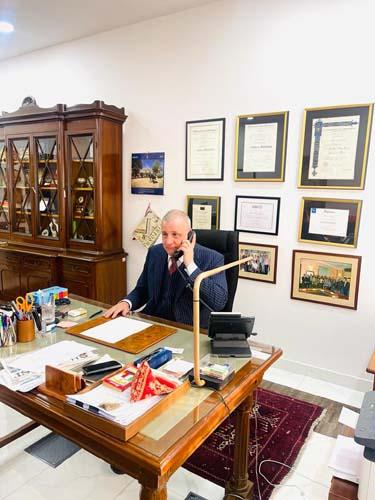
Italy: Venice unveils exact dates in 2024 when it will charge tourist entry fee
Newswire
Whether arriving by boat, bus, car, train, or plane, Venice, Italy’s famed floating city, has always required a little bit of extra effort to visit—and starting in spring 2024, it’s going to require a little bit of extra cash.

This past fall, Venice’s city council approved the introduction of a 5-euro (US$5.45 based on current conversion rates) entry ticket for day visitors into the city. And on November 23, the city revealed the exact 29 days during 2024 when day visitors will have to purchase a ticket for entry if they want to step foot on La Serenissima.
Venice’s 2024 entry fee schedule
April 25–30
May 1–5, 11–12, 18–19, 25–26
June 8–9, 15–16, 22–23, 29–30
July 6–7, 13–14
On those dates, between the hours of 8:30 a.m. and 4 p.m., the 5-euro entry fee will be charged to every person over the age of 14 entering the ancient city of Venice, with the exception of residents, property owners, students attending universities in the city, and employees who work in Venice.
Hotel guests, who already pay a per-night tourist tax, will also be exempt. However, they will still need to register in advance online or get a QR code from the hotel.
In order to pay the fee, day visitors will need to log on at http://cda.ve.it, where they will be able to obtain a QR code that can be shown to the authorities “in the event of checks,” according to the latest update from the city council. The QR code “certifies payment of the contribution or the condition of exclusion/exemption and must always be kept with you,” the city stated.
“We need to show to the world that, for the first time, something is being done for Venice,” said city mayor Luigi Brugnaro during the September 12 council meeting. In this case, “something” means a ticketed pilot program to gauge the effects and logistics of an entry ticket in the hopes that it could potentially ameliorate Venice’s storied issues with overtourism.
Approval of the entry ticket follows more than two years of talk, debate, and postponing, and a UNESCO recommendation to add Venice to the List of World Heritage in Danger. On September 14, UNESCO voted to spare Venice from the so-called endangered list, which includes approximately 55 locations that face threats such as war, natural disasters, climate change and/or unchecked tourism. Though it was once again spared, it’s not the first time Venice has seen its UNESCO protected status threatened.
Venice has experienced a steady rise in visitors since the turn of the 21st century, with 2019 shattering records and 2023 looking to potentially top 2019 numbers. In 2019, nearly 13 million people visited the historic city, according to the City of Venice and Italy’s National Statistics Institute (ISTAT), drastically overshadowing the city’s 49,665 residents. To be honest, that’s not news—Venice has been overrun by tourists going back decades now. And in 2021, and after a very vocal protest from residents, environmentalists, and Venice lovers, the Italian government banned large cruise ships from Venice’s historic center. But this doesn’t mean the city no longer sees crowds pile up during the daytime. It still does.
Cramped calle (streets) and long lines to enter St. Mark’s Basilica and the Doge’s Palace have become signatures of the Venice experience. During high season, which stretches from March through October, mornings at Stazione Santa Lucia, Venice’s train station, can feel like Grand Central at rush hour or the final minutes before a Harry Styles concert, as visitors rush out to the Rialto and San Marco in a tight single file march.
“Venice is so much more: its artisans, its food, its museums, its art, its music, its boats, and endless other marvelous things,” says Monica Cesarato, Venice culinary guide. “I truly believe that the way to reduce the number of tourists is by educating people, not by taxing them.”
Added Cesarato, “Nowadays people come to Venice only to take a selfie and add a tick to their bucket list. We need to educate people by using the tools we have, like social media, to research the city before coming. Once people realize how much can be done in Venice and that one or two days are not enough to discover all the incredible things that can be experienced here, then people will want to stay more and the number of day-trippers will go down.”
When the entry fee goes into effect next year, it clearly won’t be the end-all solution to years-long buildup of residents’ frustrations. And it has also already opened the door to questions such as whether or not there will be a limit in the number of reservations per day (the city council says there won’t be) and to concerns about whether or not it will actually curb the crowds, potentially create bottlenecks, or worse, turn the city into a theme park of sorts.
“We [are] . . . aware of the urgency of finding a new balance between the rights of those who live, study, or work in Venice and those who visit the city,” deputy mayor Simone Venturini said in an email. “This is why, at certain times and on certain days, innovative flow management is required, capable of putting a brake on day-to-day tourism.”
